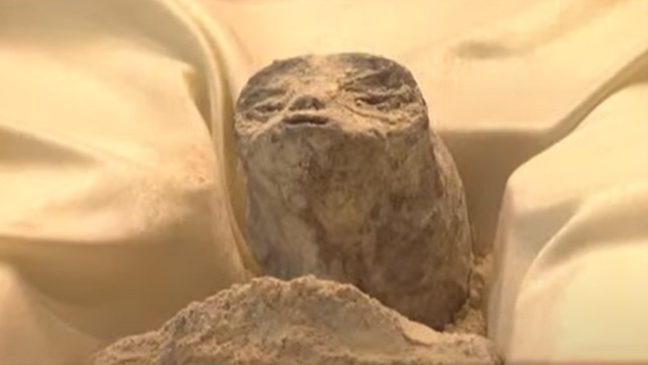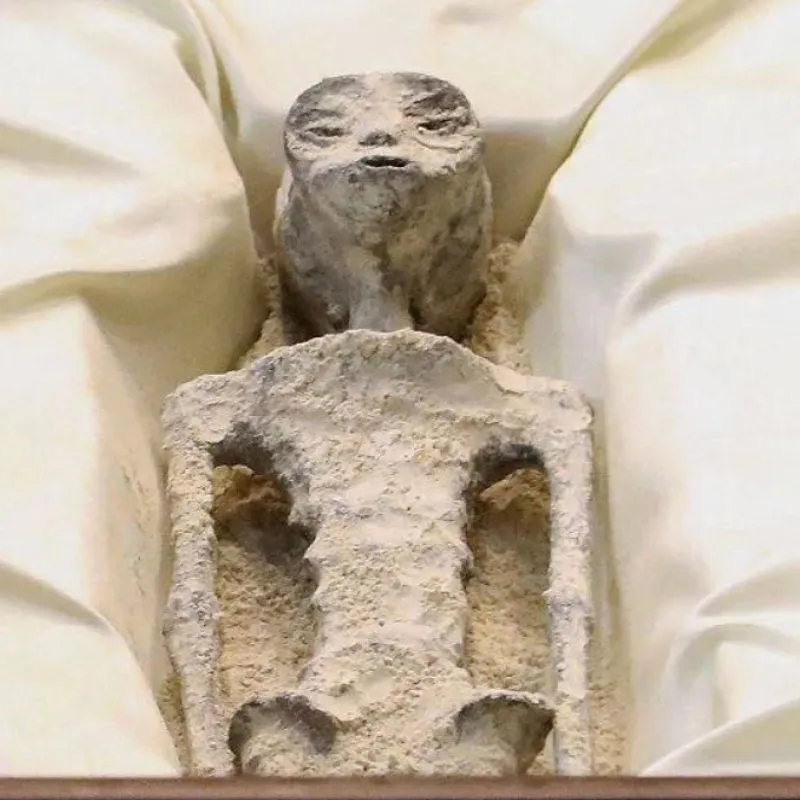
During a congressional hearing in Mexico, two alleged non-human alien corpses were presented to politicians, researchers, and experts. While some speculated about extraterrestrial origins, many experts found the claims unsubstantiated and the corpses “way too humanoid” to be aliens. The specimens were reportedly discovered in Cusco, Peru, and estimated to be around 1,000 years old.
UFO Researcher’s Claims UFO researcher and journalist Jaime Maussan testified that nearly one-third of the corpses’ DNA is “unknown,” suggesting they are not part of terrestrial evolution. He asserted that they were not recovered from a UFO crash but were found in diatom (algae) mines and later fossilized. Maussan claimed that experts at the Autonomous National University of Mexico examined the specimens, using radiocarbon dating to gather DNA evidence and X-rays revealing one of them contained “eggs.”
Skepticism and Scientific Critique Physicist and presenter Professor Brian Cox expressed skepticism, stating that the specimens appeared too humanoid to be aliens. He argued that it was highly unlikely for an intelligent species from another planet to resemble humans. Cox also criticized the lack of rigorous scientific analysis, suggesting that sending a sample for genetic testing to institutions like 23andMe or local universities would provide more conclusive results.
Ryan Graves’ Perspective Former US Navy pilot Ryan Graves, who previously highlighted the underreporting of UFOs (unidentified anomalous phenomena), was also present at the congressional meeting. He shared the skepticism and disappointment regarding the alien claims.
In summary, while claims of alien corpses sparked intrigue at the Mexico congressional hearing, experts remain highly skeptical, emphasizing the need for rigorous scientific scrutiny and evidence to substantiate such extraordinary assertions.
![]()




